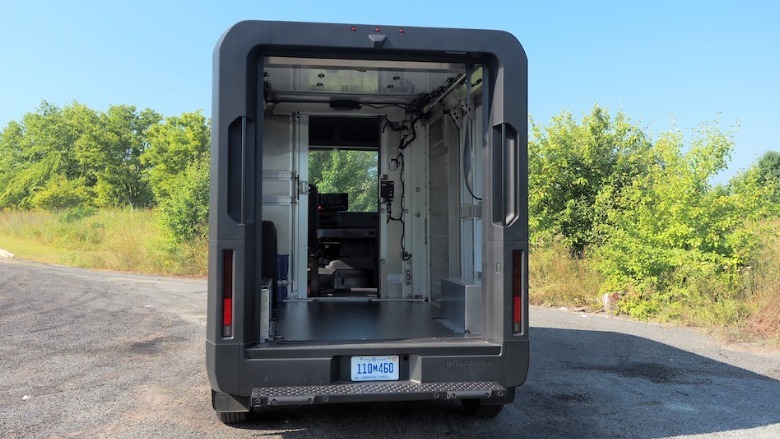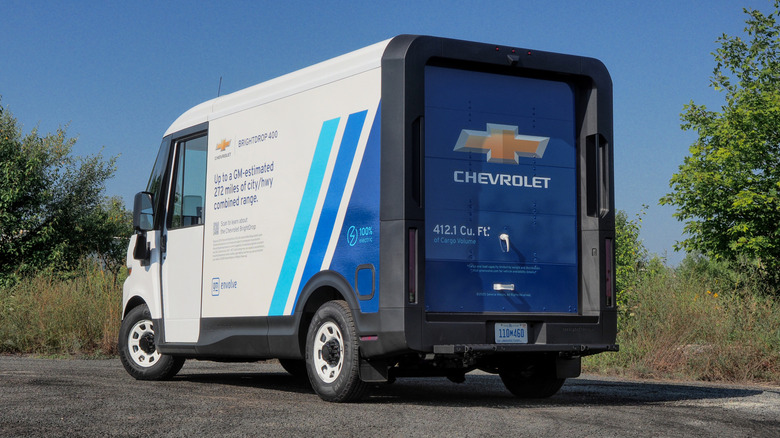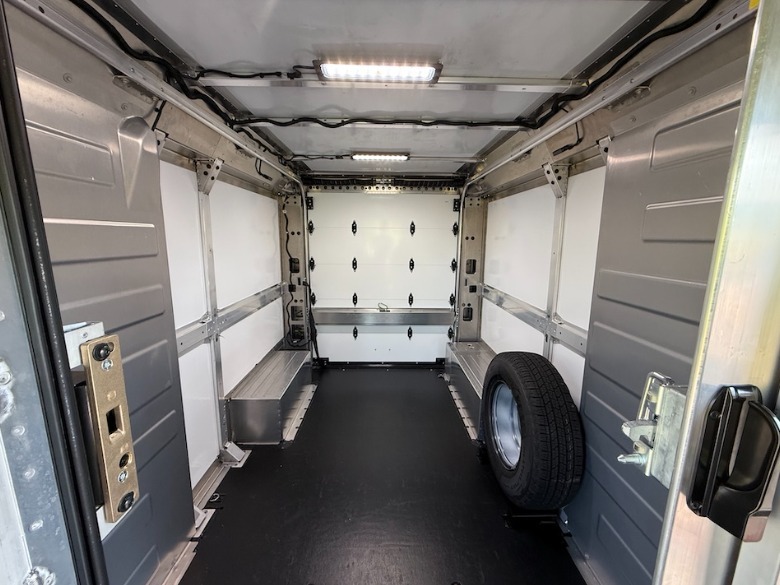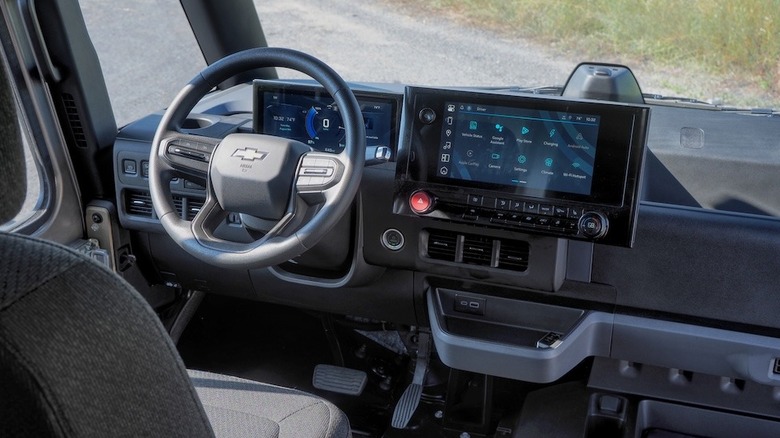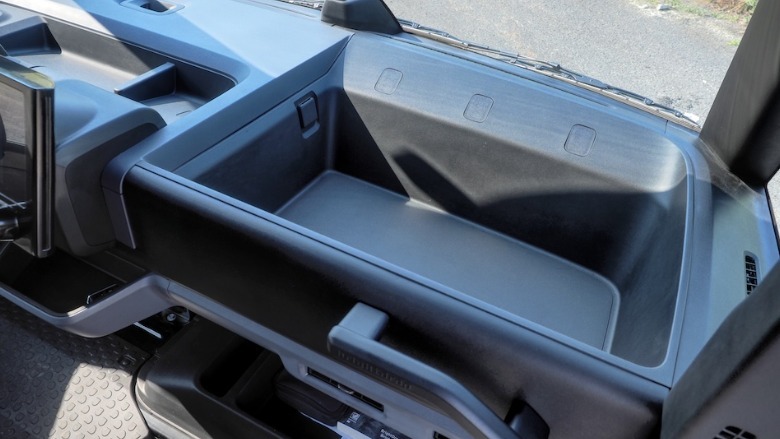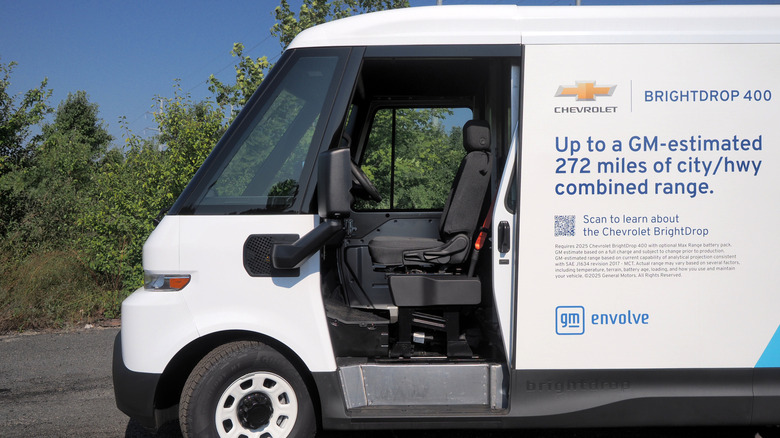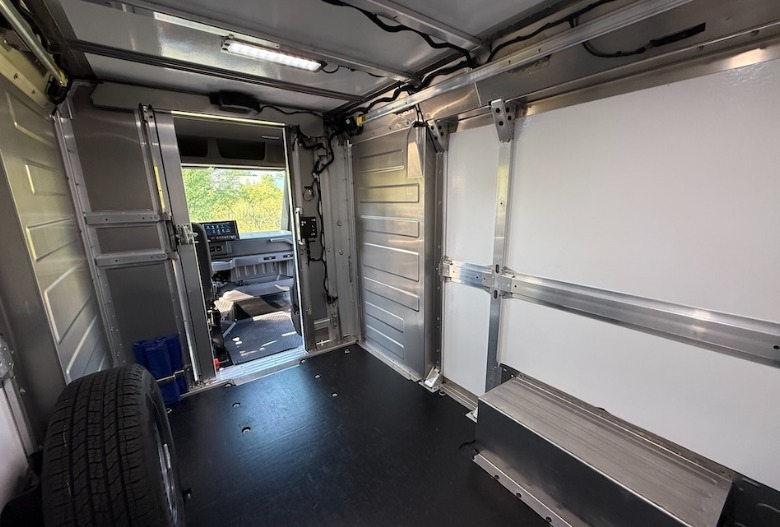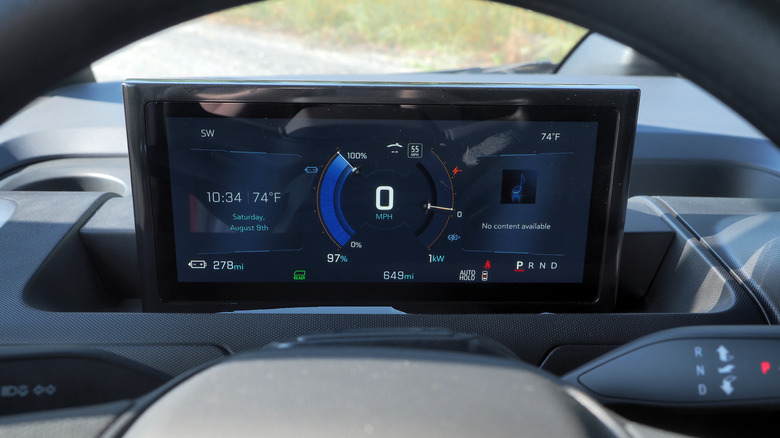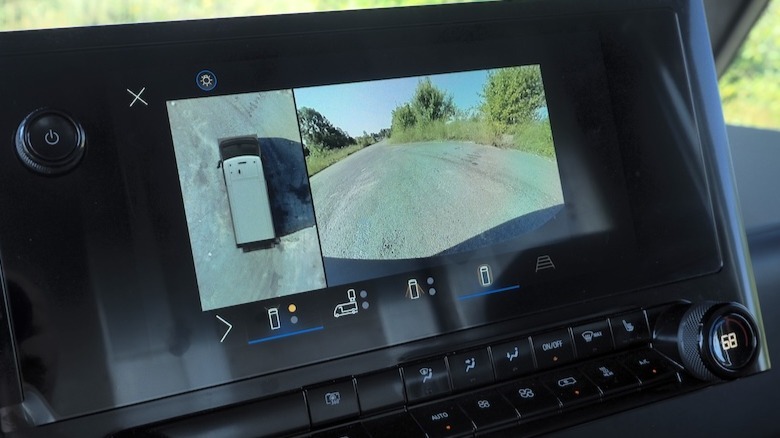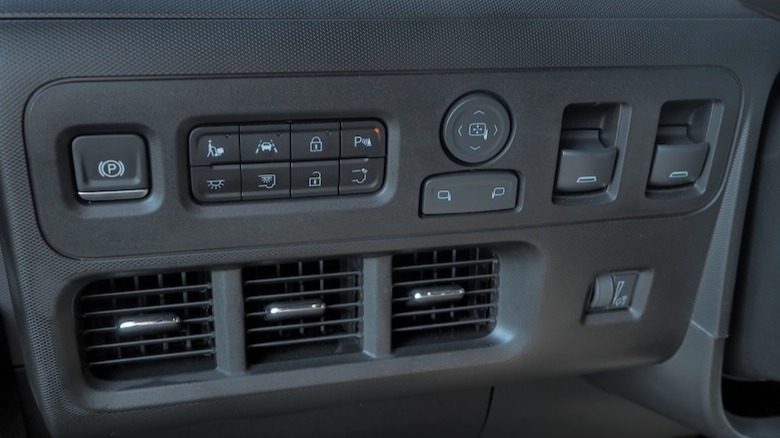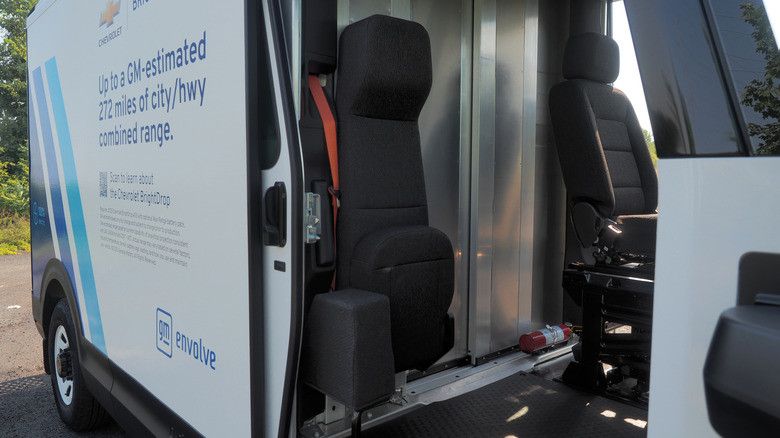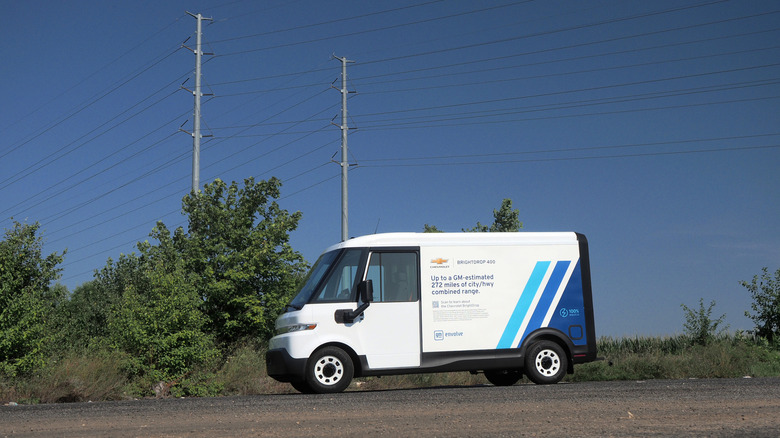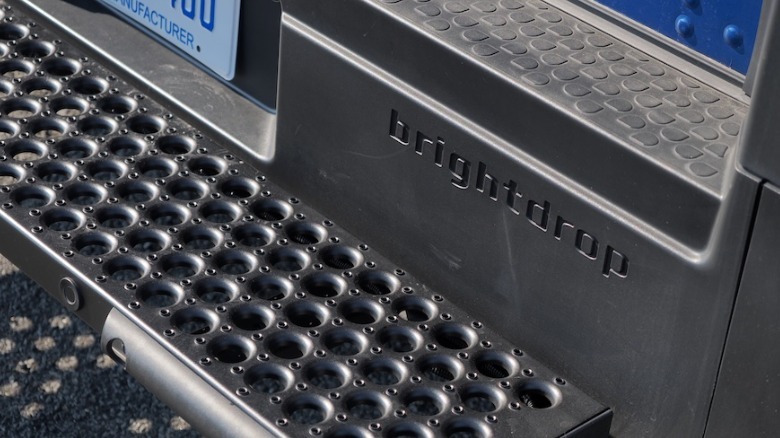A Week With Chevy's Electric BrightDrop Had Me Dreaming Of The Quiet Van Life
You get to drive some weird stuff, in this line of work. I'm not really talking about the exotics, or the supercars, though getting a glimpse of how the 0.1% lives is always intriguing. No, I mean the real oddballs, the stuff that most regular people won't get to drive. Tilting two-seater city car concepts, and quad-motor skunkworks prototypes, and priceless extreme-range EVs.
And yes, Chevrolet's BrightDrop all-electric van.
If it seems strange, to include a last-mile EV in that list, it's because — unless you're a delivery driver — there's a pretty decent chance you won't find yourself behind the wheel of Chevy's van any time soon. In fact, given the most exposure a lot of us have to the segment is occasionally renting something from U-Haul for a move or a particularly enthusiastic IKEA haul, you'd be forgiven for thinking that while the consumer world has embraced electrification, workhorses like vans were still languishing far behind.
You don't need to be FedEx or UPS to buy a BrightDrop
When asked if I wanted to spend a week with the BrightDrop, then, I couldn't say no. What's interesting is that the EV isn't quite as out of reach as you might think it is.
You don't — counter to what you might expect, and how other vendors of electric vans have set things up — need to be a business in order to buy a BrightDrop. In fact, GM recently tried to make access for regular consumers even more straightforward. As well as dropping the whole "separate brand" in favor of the familiar bowtie, you can also order one alongside a Traverse or Tahoe at a lot of standard Chevy dealerships.
They'll sell you one of two models: the BrightDrop 400, which is just shy of 20 feet in length (and the model Chevy loaned me), and the BrightDrop 600, just over 24 feet long. Both come in single-motor front-wheel drive form, or dual-motor all-wheel drive, and the 104.4 kWh "Standard Range" battery by default. AWD versions can be upgraded to the 173.3 kWh "Max Range" battery.
Range is best in the city
Overall range varies, but you're looking at up to 175 miles with the BrightDrop 400's standard battery on the EPA's combined cycle (or 197 miles in the city), and up to 272 miles for the larger battery (or 303 miles in the city). Not great, by consumer EV standards, but decent for electric van. The 400 has 412.1 cu-ft of cargo space, with up to 3,710 pounds of payload capacity. If you want more space, the 600 has 614.7 cu-ft and up to 3,350 pounds of payload capacity.
While BrightDrop initially made things like its full ADAS suite — which here includes automatic emergency braking, front pedestrian and cyclist braking, forward collision alerts, and more — optional, along with niceties like parking sensors, lane-keep assist, and lane-departure warnings, Chevy now bundles them as standard. They were, the automaker tells me, invariably being added to most orders.
The same goes for cabin creature comforts. In a category where A/C is considered a rare luxury, the BrightDrop's potent HVAC, heated driver's seat, and heated steering wheel are welcome car-tech carried over. The power-sliding doors give next-level minivan vibes, and the 11.3-inch center touchscreen and 11-inch digital cluster wouldn't feel out of place in an electric Chevrolet SUV. Only the latter doesn't have cabin storage bins (with 12V and 110V outlets) that could swallow not just multiple laptops but a whole desktop PC. The dashboard plastics aren't soft-touch, but I suspect they were picked more with durability in mind.
Power for more than just driving
Come the 2026 model year, and a handful of small but targeted changes will make the BrightDrop even more appealing. The 19.2 kW onboard charger for Level 2 use being made standard (the MY25 gets 11.5 kW as standard) is nice, but so too is the option of a 7.2 kW Power Offboarding Inverter. Where the MY25 has a single 120V outlet in the cargo space, this new power option upgrades that to four 120V plus one 240V outlet.
Grabbing power directly from an EV's big battery is something we've seen pitched to excellent effect on electric trucks like the Ford F-150 Lighting and Chevrolet's own Silverado EV. In a van like the BrightDrop, though, the possibilities get even more intriguing, whether it's used to power high-voltage cooking appliances or commercial espresso machines in a food truck, or heating and A/C in an RV conversion.
Sadly, Chevrolet didn't seem inclined to let me take a circular saw to the BrightDrop 400's sides, or install a bed and mini-kitchen. Instead, I did altogether more van-like chores with the EV, like helping some friends emptying their house into storage. Things like the integrated rear grab handles and fixed step definitely helped, and the grippy standard flooring stopped boxes from sliding around unduly.
Unexpectedly easy to drive
My biggest takeaway, though, is just how much more pleasant driving an electric van is compared to a gas or diesel version. The BrightDrop isn't excessively powerful, unlike so many EVs, but the instant torque delivery and convenience of one-pedal driving make so much sense in a well-laden vehicle. It's surprisingly easy to drive, and features like rear and side-view cameras — the video from which stays on-screen, even when you're driving at highway speeds — make placement on the road no more of a hassle than, say, a Suburban might be.
Ironically, the quiet drivetrain only leaves auditory space for other noises to fill. The sliding metal door between the cab and the cargo area rattles loudly, as does — though more distant — the rear hatch. Wind noise picks up at higher speeds.
I also had to turn up the volume of the infotainment system (which, unlike other GM EVs, still supports Apple CarPlay and Android Auto since fleet operators may have phone-specific logistics apps they need drivers to use), to drown out the passenger complaints about the fold-down jumpseat. That, apparently, was the worst car seat they'd ever sat in, and led to instant back pain (take what you will from this vocal sample of one).
Flexible but not cheap
From the driver's seat, the experience was hard to argue with. I'm not the target audience for an electric van — or, at least, I didn't think I was — but it's difficult to rein in your imagination with a blank canvas like this. Most BrightDrop models will likely end up outfitted with shelves or tool racks, their flat interior walls and squared-off wheel arch housings making that process easy, but it really wouldn't take much to craft a food truck, or a camper, or even something more outlandish (what about a mobile recording studio, or a traveling library?) from Chevy's bare bones.
Those bones aren't cheap. This particular BrightDrop 400 AWD landed at $91,635 (including a hefty $3,325 destination) when the $8k Max Range battery and a handful of other extras were added. Chevrolet is currently quoting various cash offers that could apparently bring a base-spec 2025 version down from around $68k to $46,425, but that round of deals expires at the end of September 2025.
It's unclear what impact the Trump administration axing the federal electric vehicle incentive (also at the end of September) will have on model year 2026 prices, but it's hard not to imagine the BrightDrop getting more expensive, just like most other EVs seem set to.
A small group of electric vans
Still, a Ford Transit Trail was — before that ready-to-upfit RV-friendly van was quietly discontinued earlier this year — around $68k, and you still had to budget for a third-party electric system since it was gas powered. Mercedes' eSprinter (which I've also driven, and liked) starts at about $62k before destination, but has less power and less range; Ford's eTransit starts at around $54k with destination, but with less power, less range, and less standard equipment. Neither the Mercedes nor Ford EVs offer AWD.
Van fans on a budget — or roaming far between charger opportunities, where BrightDrop's 120 kW DC fast charging support pales next to an Escalade IQ's up to 350 kW — will still want to look elsewhere, of course. Yet with ever-increasing EV infrastructure, including options to charge at points of interest like national parks, ousting gas isn't so strange a concept for RV living now. And for those setting up small businesses at farmers' markets or similar, the convenience of onboard power rather than a noisy gas generator has obvious allure.
Like with all electric vehicles, there are pros and cons still. The biggest benefit of GM's pitch is undoubtedly in replacing some of the fume-spewing ICE vans dropping off online purchases around the neighborhood. But if some of BrightDrop's EVs take a detour to more whimsical routes, well, that's all the better.

